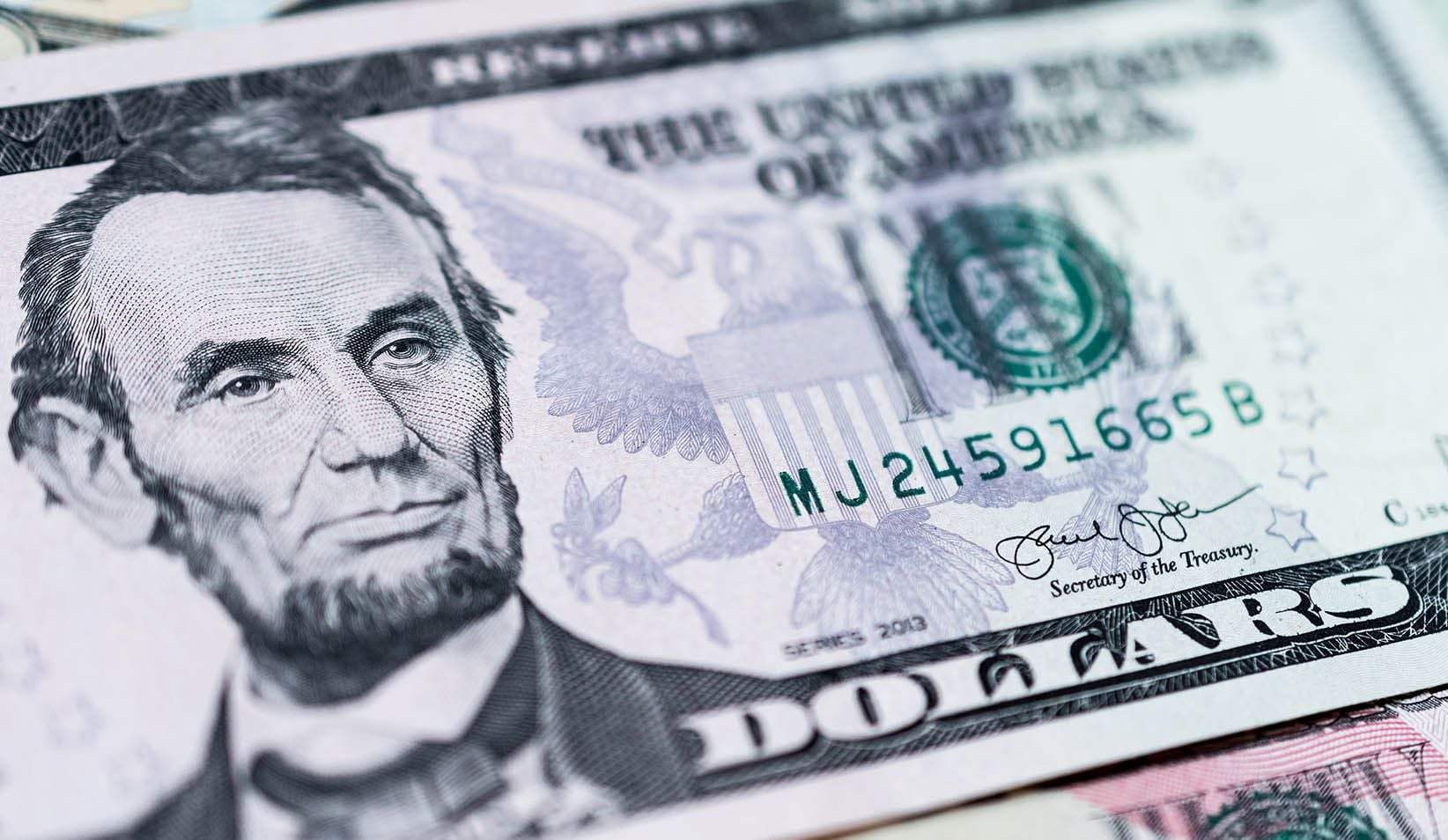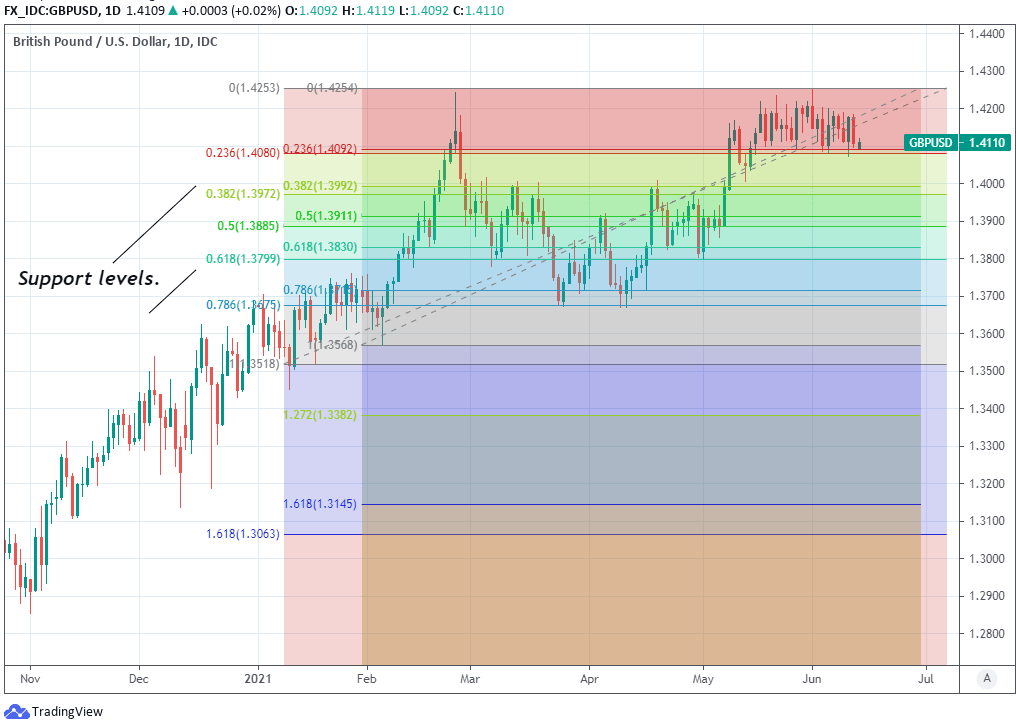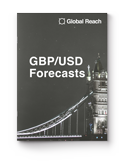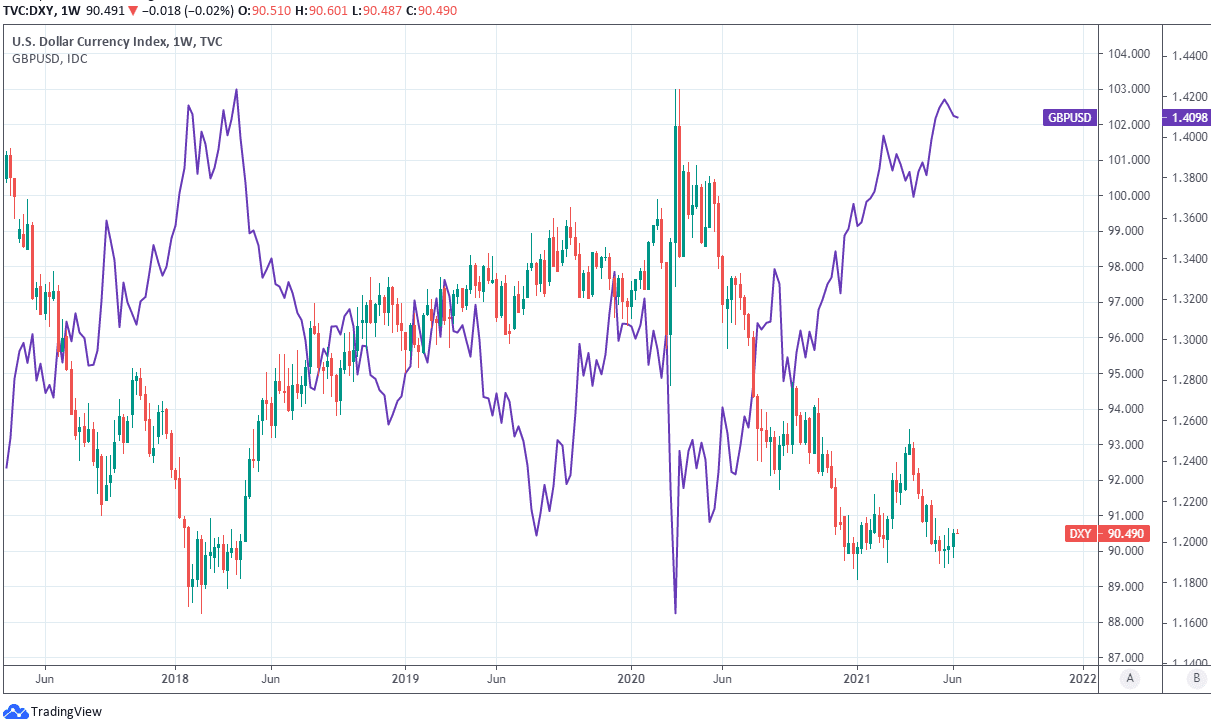Pound-Dollar Week Ahead Forecast: Pushing Boundaries as Fed, Key Economic Figures Loom
- Written by: James Skinner
- GBP/USD finding feet above 1.41 after USD’s power surge.
- May struggle at 1.42 in a noisy week for U.S., UK economies.
- As Fed update brings QE guidance & dot-plot back into focus.
- Hawkish surprise could see GBP/USD support under pressure.

Image © Adobe Images
- GBP/USD reference rates at publication:
- Spot: 1.4084
- Bank transfers (indicative guide): 1.3689-1.3788
- Money transfer specialist rates (indicative): 1.3955-1.3980
- More information on securing specialist rates, here
- Set up an exchange rate alert, here
The Pound-to-Dollar exchange rate stabilised above 1.41 on Monday but could see both the upper and lower boundaries of its recent trading range tested over the coming days in what promises to be a noisy week for the UK and U.S. currencies.
Sterling was finding its feet around 1.4110 at the opening of the new week after falling by almost 100 points on Friday when the U.S. Dollar surged across the board in price action that lacked an obvious economic trigger, although the Pound fared better than many other major currencies.
With the greenback aside Sterling ceded ground to only the Japanese Yen and Chinese Renminbi in the major currency space, while the Pound-to-Dollar rate left intact a Fibonacci retracement level around 1.4092 that has now successfully arrested losses on four occasions since early May.
Early May was when Sterling recaptured the 1.41 handle for the second time in 2021 and before climbing to 1.4242 and its highest since April 2018, although both of those levels could conceivably be tested again this week as key UK economic figures are released ahead of and after Wednesday’s Federal Reserve (Fed) monetary policy decision for June.
“The market continues to consolidate below the recent highs and the near term risk of a deeper corrective sell-off remains. It is possible that 1.4090/80 will be retested,” says Karen Jones, head of technical analysis for currencies, commodities and bonds at Commerzbank.
“Failure here should refocus attention onto nearby support at 1.4000/18,” Jones adds.
Above: Pound-Dollar rate shown at daily intervals with Fibonacci retracements of two key 2021 price moves indicating various support levels.
Secure a retail exchange rate that is between 3-5% stronger than offered by leading banks, learn more.
GBP/USD would risk being pulled below 1.41 this week if the Fed’s 19:00 decision in the mid-week session or its guidance for the months ahead contains any suggestion that the bank is beginning to think about changes to its $120 bn per month quantitative easing (QE) programme or interest rate rises that come sooner than its guidance has so-far indicated.
The Fed has been at pains to stress in recent times that it has no intention of lifting U.S. interest rates from what is barely more than zero percent any time soon, or of dialling back a QE programme that has seen them hoovering up a record amount of government and mortgage bonds each month, which has seen the Dollar sold widely and in exchange for just about all other currencies including the Pound over the last year
“No one knows how far the reopening inflation spike will rise, or how the labor market will respond. The Fed will start the tapering conversation soon, but the real issue is whether they'll hike before 2024,” says Ian Shepherdson, chief economist at Pantheon Macroeconomics.
The rub for the currency and bond markets is that uncertainty over the Fed’s commitment has risen in the last few months alongside various measures of inflation, some of which have spiked to levels not seen since the aftermath of the global financial crisis and stoked doubt in some parts of the market about whether price increases will really turn out to be as “transitory” or temporary as the bank has so-far expected.
{wbamp-hide start}
GBP/USD Forecasts Q2 2023Period: Q2 2023 Onwards |
“The FX market remains bearish USD broadly on the expectation that, despite recent communication indicating a willingness to "talk about talking about" it, the Fed will resist formally signalling taper anytime soon,” says Athanasios Vamvakidis, head of FX strategy at BofA Global Research.
“We fully agree with our economics and rates strategy colleagues that this is ultimately an unsustainable proposition but respect the market's "prove it to me" psychology in the absence of a material shift in Fed tone,” Vamvakidis adds.
Fed rate setters have to make a series of judgement calls that would be exceptionally difficult at the best of times but which have been complicated further by the unprecedented actions taken across countries in response to the coronavirus pandemic, which have impacted corporate supply chains and the cost of producing manufactured goods in ways that could yet be felt long after the coronavirus has been sustained.
Just how the Fed judges, communicates and ultimately manages the risks of a long sustained overshoot of its 2% average inflation target will be key to U.S. Dollar and GBP/USD price action this week as well as in the months and quarters to come, although this process is complicated by multiple factors including the bank’s new policy strategy and the global inflation trend of the last decade.
Above: U.S. Dollar Index shown at weekly intervals with GBP/USD.
“In May headline inflation rose to an impressive 5.0%. The rise in core inflation, however, is even more eye-catching. At 3.8% it's now up to the highest level since 1992. As a result, average inflation is also picking up,” says Jeroen Blokland, a multi-asset portfolio manager at Robeco.
“This is important as the Federal Reserve has stated many times it will allow a (temporary) overshoot in inflation to make up for ‘lost’ inflation earlier. But based on the averages mentioned above there is not much making up to do,” Blokland adds.
The Fed is looking to generate more inflation over a longer period than ever before, but inflation increases like those seen in recent months are difficult to generate and have a history of disappearing on central bankers.
Notably, near-5% inflation like that seen last month was also seen in the years following the global financial crisis but was quick to disappear then and ultimately gave way to a years-long period in which price growth stagnated below the bank’s 2% target level: As a result, it’s at least as likely that the bank sticks with its Dollar-bearish stance this week as it is that it begins contemplating changes.
That would be supportive of the Pound-Dollar exchange rate in what is also a busy and potentially positive week for UK economic data, which includes inflation, job and retail sales numbers as well as two speeches from Bank of England Governor Andrew Bailey.
“I’m calling for flat to modestly higher USD into June 16, not a major dollar rally. Expect the big dollar supports (e.g., 1.2000 USDCAD, 0.7800/25 AUDUSD, 1.4220/50 GBPUSD) to hold this week and next as demand for dollars modestly exceeds supply,” says Brent Donnelly, a spot FX trader at HSBC.







